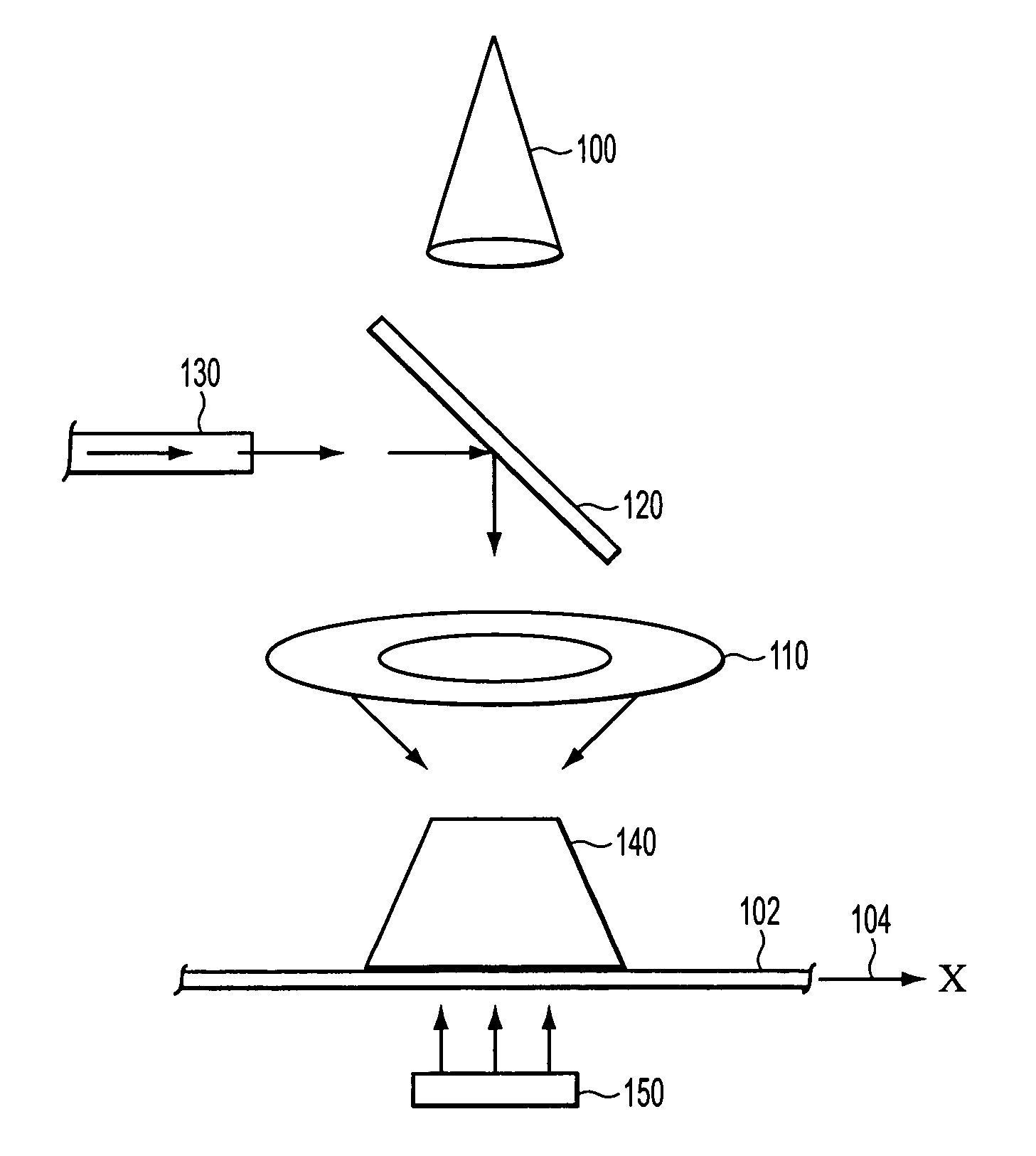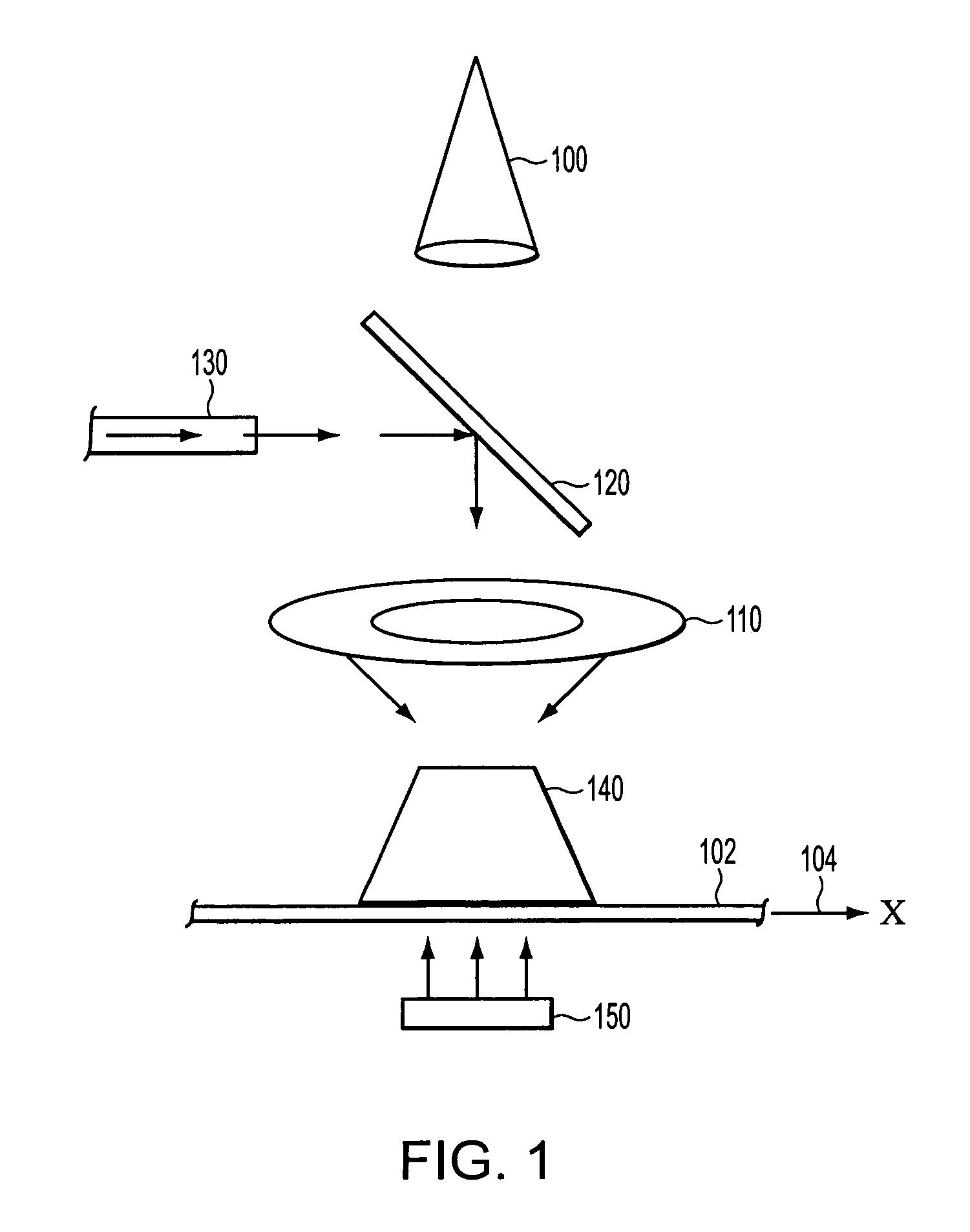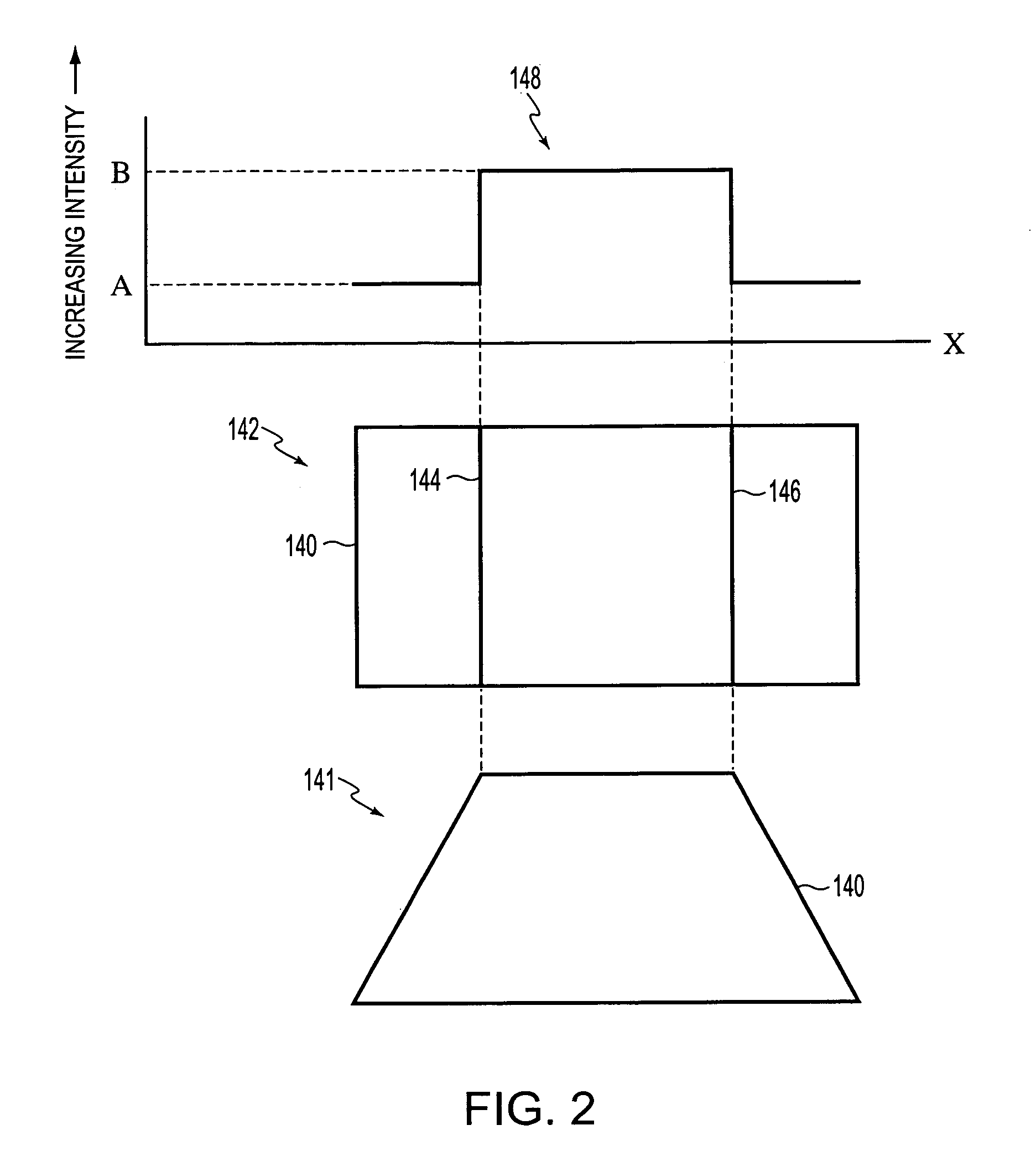Strobe illumination
a technology of strobe light and illumination system, which is applied in the field of strobe light, can solve the problems of improper illumination of workpieces, improper mixture, and not all light sources of illumination system can be operated at their maximum intensities, so as to reduce (if not eliminate) artifacts and minimize blurring
- Summary
- Abstract
- Description
- Claims
- Application Information
AI Technical Summary
Benefits of technology
Problems solved by technology
Method used
Image
Examples
Embodiment Construction
[0032]Micro-strobing may be applied to any machine vision illumination system to achieve desirable, accuracy-enhancing, lighting characteristics. For example, FIG. 1 shows an exemplary lighting system in which the micro-strobing technique may be applied. A workpiece 140 is placed on a moving mechanism such as a transparent stage 102, for example. The transparent stage 102 may comprise a transparent portion of an X-Y stage, a transparent conveyor belt, or the like. A stage light 150, a ring light 110 and a coaxial light 130 together with a half-silvered turning mirror 120 illuminate the workpiece 140. A photodetector 100, such as the CV-A1-20 CCD camera, manufactured by JAI of Copenhagen, Denmark, captures the light reflected from the workpiece 140 to form an image in the form of an array of pixels, for example, that may be processed to identify and inspect relevant features of the workpiece 140. For purposes of explanation, a nominal direction of motion 104, of the workpiece relativ...
PUM
 Login to View More
Login to View More Abstract
Description
Claims
Application Information
 Login to View More
Login to View More - R&D
- Intellectual Property
- Life Sciences
- Materials
- Tech Scout
- Unparalleled Data Quality
- Higher Quality Content
- 60% Fewer Hallucinations
Browse by: Latest US Patents, China's latest patents, Technical Efficacy Thesaurus, Application Domain, Technology Topic, Popular Technical Reports.
© 2025 PatSnap. All rights reserved.Legal|Privacy policy|Modern Slavery Act Transparency Statement|Sitemap|About US| Contact US: help@patsnap.com



